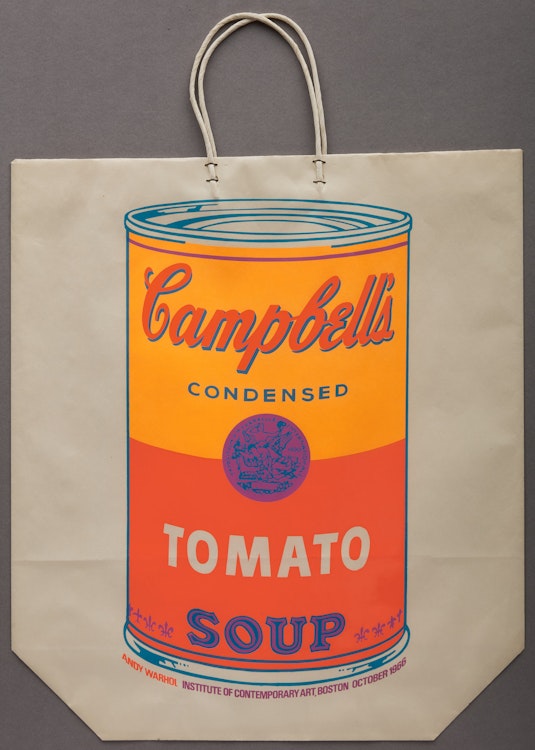Campbell’s Soup Can (Tomato) (F&S II.4A) by Andy Warhol

Andy Warhol
Campbell’s Soup Can (Tomato) (F&S II.4A)
colour screenprint on a shopping bag
Printed by Unknown. Published by the Institute of Contemporary Art, Boston, Massachusetts
16 x 9 in ( 40.6 x 22.9 cm ) ( image )
Auction Estimate: $5,000.00 - $7,000.00
Price Realized $5,400.00
Sale date: October 22nd 2024
Private Collection, Toronto
Frayda Feldman and Jörg Schellmann, “Andy Warhol Prints: A Catalogue Raisonné 1962–1987”, 4th edition, 2003, catalogue no. II.4A
Share this item with your friends
Andy Warhol
(1928 - 1987)
Fascinated by consumer culture, fame, and the media, Andy Warhol established himself as one of the most famous and influential artists of the twentieth century. Born in 1928 in Pittsburgh, Pennsylvania, to working-class immigrants from present-day Slovakia, Warhol grew up with an enduring interest in celebrities and mass culture. He studied at the Carnegie Institute of Technology before moving to New York City to become a successful commercial artist and illustrator. During the 1950s, his drawings were published in magazines and displayed in department stores. Yet, Warhol was developing his own style of painting at the same time, inspired by mass culture.
By the early 1960s, Warhol began producing paintings of banal consumer goods, such as soup cans and Coca-Cola bottles, and movie stars, thus establishing his status as the founder of Pop art. He deliberately blurred the lines between high and low art, celebrating popular culture and consumerism unlike ever before. Warhol embraced the photomechanical silkscreen process in 1962 by producing paintings through photography, thus rejecting traditional notions of the handmade and authorship from his works. The fact that his studio was called “The Factory” only reinforced this image. By 1963, he had replaced his silkscreen process for hand painting. Working with assistants, he produced series of flowers, cows, and portraits of celebrities like Marilyn Monroe, Queen Elizabeth II, Liz Taylor and Mick Jagger, among many others. In the early 1970s, he returned to painting after concentrating briefly on making films, producing monumental silkscreen images of Mao Zedong, commissioned portraits and the Hammer and Sickle series. A major retrospective of his work, organized by the Pasadena Art Museum in 1970, travelled across the United States and abroad. Warhol died in 1987 at the age of fifty-eight in New York.

